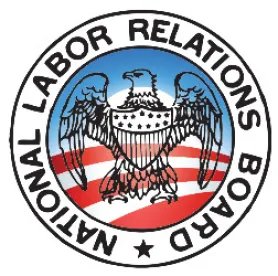On December 21, 2020 the NLRB adopted an ALJ’s determination that a union’s request for information about non-bargaining unit employees was relevant. One of the issues present in the case was whether a union’s request for information about non-bargaining unit employees sought relevant information. As discussed below, the NLRB upheld the ALJ’s determination that the information was relevant solely because the employer should have known the information was relevant based on the circumstances surrounding the request.
In a dispute between Triumfo, Inc. (the “Employer”) and International Brotherhood of Teamsters, Local 631 (the “Union”), the Union grieved the Employer’s use of subcontractors to perform certain warehouse and event services work. Attached to the Union’s grievance was an information request seeking, among other things, the attendance records, job assignments, payroll records, and personnel records for all employees—employees both within and outside of the bargaining unit. The ALJ determined that the information requested was relevant as it pertained to bargaining unit employees, because information concerning the terms and conditions of unit employees’ employment is presumptively relevant and the Employer did not dispute the presumption. The ALJ then noted that information concerning non-unit employees does not enjoy a presumption of relevance and a union must show that the requested information is relevant before triggering an employer’s duty to bargain by providing the requested information.
A union’s burden to establish relevance is a discovery-type standard and is not a heavy burden. Generally, a union must establish the relevance of the specific information requested at the time of the request, not post hoc once the issue is in litigation. A union can typically establish the relevance of information concerning non-unit employees by demonstrating the relevance of the information to the employer. Alternatively, relevance may be established if the circumstances surrounding the information request are such that the relevance of the requested information is readily apparent to the employer. However, a union cannot establish relevance by merely showing that the requested information will be useful in helping the union determine whether some unstated violation of a collective bargaining agreement occurred.
Courts have found that the circumstances rendered the relevance of information concerning non-unit employees readily apparent when an employer was in the process of selling its business and the union requested information concerning an asset purchase agreement (Crozer-Chester Med. Ctr. v. N.L.R.B., No. 18-1640, 2020 WL 5667742, at *7-8 (3d Cir. Sept. 24, 2020)), when a union submitted a formal information request that followed multiple prior oral and written inquiries regarding the employer’s use of contractors (W. Penn Power Co. v. N.L.R.B., 394 F.3d 233, 242-44 (4th Cir. 2005)), and when, in the course of bargaining, an employer put the issue of rising healthcare costs on the table and, in response, the union requested information concerning healthcare claims filed by both unit and non-unit employees (U.S. Testing Co. v. N.L.R.B., 160 F.3d 14, 18-20 (D.C. Cir. 1998)).
Here, because the Employer did not provide an explanation for refusing to provide the Union with the requested information, the ALJ’s analysis of whether the information concerning non-unit employees was relevant is brief. However, the ALJ determined that the information concerning non-unit employees was relevant because relevance was apparent to the Employer under the circumstances. The ALJ made such determination solely because the Union attached its information request to its grievance alleging that the Employer’s use of subcontractors was a breach of the collective bargaining agreement. The ALJ reasoned that relevance was apparent to the Employer under the circumstances because the requested information would enable the Union to evaluate whether and to what extent the Employer was subcontracting unit work in violation of the collective bargaining agreement.
The ALJ’s fashioned nexus between the requested information on non-unit employees and the Union’s grievance is an expansive interpretation of the “readily apparent” standard. The NLRB’s decision to uphold the ALJ’s finding in this case serves as a reminder to employers that a union’s unexplained information request concerning non-unit employees may be deemed relevant even if the union does not explain the relevance of the information at the time of the request, and even if the request seeks broad information about non-unit employees in support of a general subcontracting grievance.





 />i
/>i

